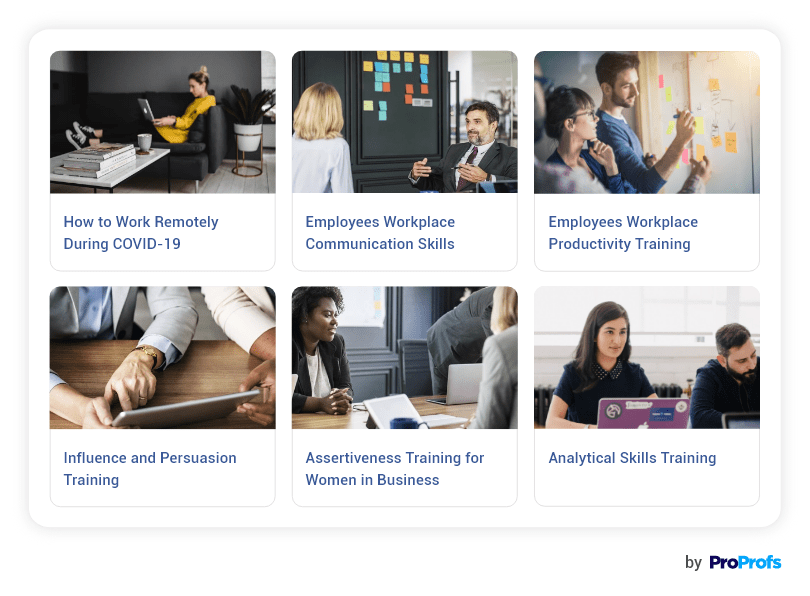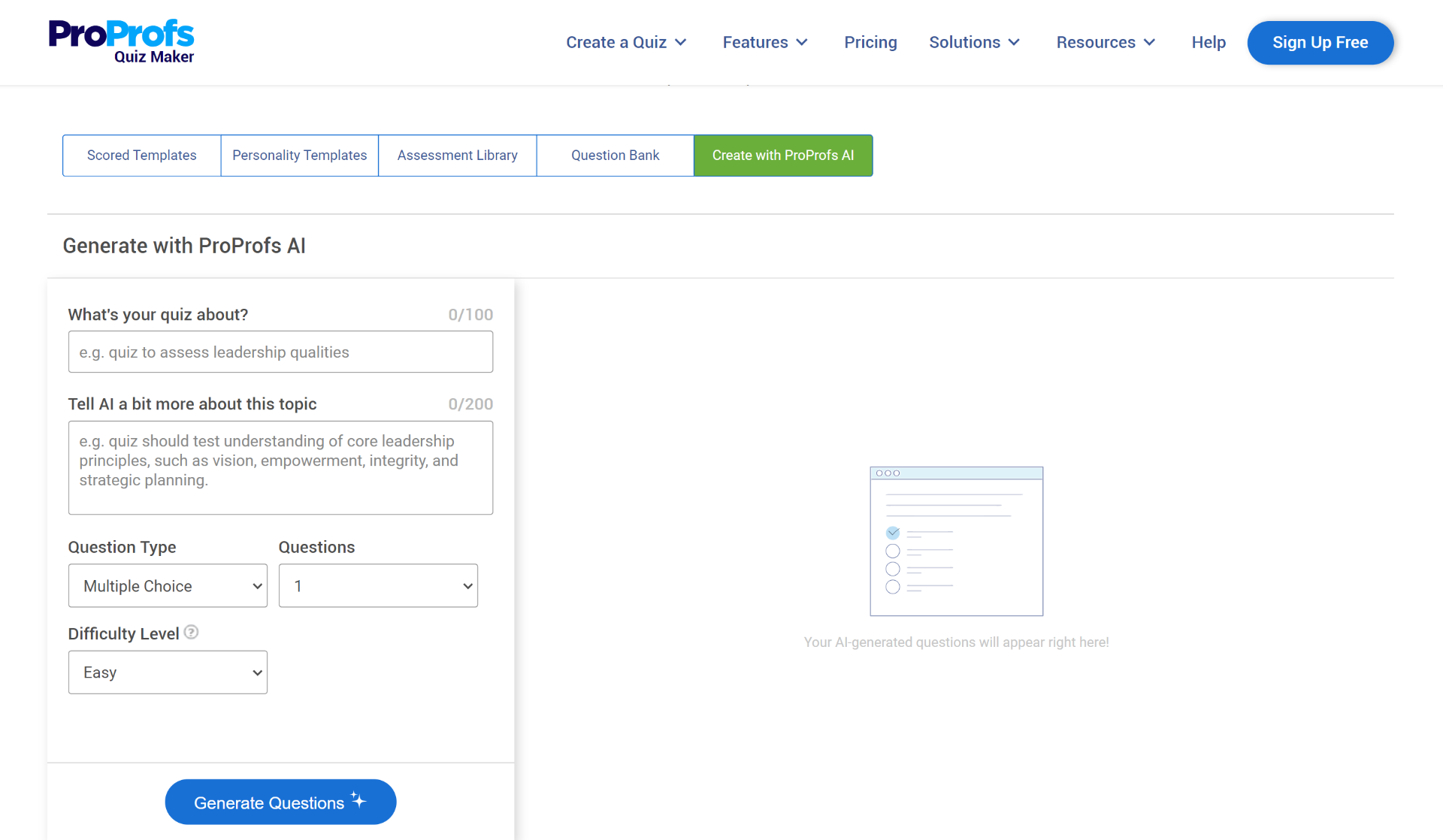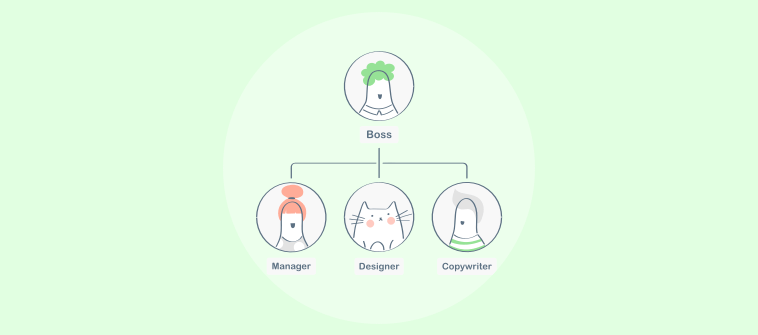Employee training is no longer an option today. And employee training best practices are applicable not just to new hires but also to existing employees.
According to a survey done on around 600 employees – Nearly 57% said they would rather leave their job than stay at the same place with no professional development.
You need proven processes and strategies to get the most out of such learning & development initiatives. To ease things for you, we’ve compiled a list of some of the best practices top organizations follow.
Let’s get started.
8 Best Practices for Employee Training
We’ve put together these most effective practices based on research, observations of leading brands, and personal experiences.
1) Determine Your Training Goals
It’s important to set the North Star first. Beyond identifying goals, aligning them with your company’s long-term vision and immediate needs is crucial.
For instance, a tech firm might focus on enhancing coding skills, while a marketing agency might prioritize creative thinking.
Begin by asking – What do we want to achieve through our training?
These objectives might range from enhancing technical skills to fostering a deeper understanding of company culture. Always remember, goals should be SMART – Specific, Measurable, Achievable, Relevant, and Time-bound.
2) Analyze Skill Gaps of Employees
According to a LinkedIn workplace survey –
Around 79% of learners preferred personalized course recommendations based on their career goals and skill gaps.
To tailor your training program to the specific needs of your employees, it is crucial to analyze their skill gaps. Conduct a thorough assessment of your workforce’s existing knowledge and abilities to identify areas where additional training is required.
You can ensure your employees have the knowledge and expertise to perform their tasks effectively by addressing skill gaps. This will not only boost their confidence but also contribute to the overall success of your organization.
| Pro Tip: Using an online training assessment tool can be one of the best practices for employee training. You can use this software for both pre and post-training assessments. |
3) Choose Employee Training Software
Selecting the right employee training software is half the battle. This software should be user-friendly and versatile enough to accommodate various learning styles and preferences. So, what are the factors you should consider when selecting one?
Here are some of the most common ones –
- The software should be easy to use and understand for the whole team.
- It should focus on flexible training delivery anytime, anywhere, on any device, fostering accessibility and convenience for learners.
- Ensure that it is cost-effective and scalable to accommodate growing training demands.
- The training software should support multimedia and gamification, promoting active participation.
- It should deliver personalized learning experiences tailored to individual and organizational needs.
- Robust tracking and reporting mechanisms for monitoring progress, performance, and program effectiveness
Still confused about how to choose the right software for your organization? Watch this video:
4) Explore & Choose the Right Courses
Exploration and selection of the right courses are key to ensuring that your training program is comprehensive and relevant to your organization. This involves researching courses that align with your training goals and the identified skill gaps. Look for courses that offer a blend of theoretical knowledge and practical application.
To avoid monotony and engage employees, introduce a mix of different training formats such as videos, interactive modules, and webinars. Remember that the content should be informative and relevant while catering to various learning styles.
If you’re using an LMS like ProProfs Training Maker, you can access a premium course library of fully customizable and ready-to-use resources.

You can also create a course from scratch or customize one of the prebuilt Training templates using existing documents, videos, images, etc.
Here’s a quick video to help you get started:
5) Use Simulations
“The most successful training programs incorporate opportunities for immediate application of new skills and provide ongoing feedback. Learning by doing is a powerful strategy for skills development.” – Patty McCord, former Chief Talent Officer at Netflix
Using simulations would be a great choice if you are looking for employee training best practices in the workplace. So, what is it?
Simulations are dynamic and interactive training solutions that can significantly enhance the learning experience. They provide a safe environment for employees to apply new skills and knowledge in realistic scenarios.
For example, Microsoft’s Flight Simulator has been pivotal in training pilots, blending technical skill development with real-world scenario training.

Simulations help employees gain confidence, improve decision-making skills, and enhance critical thinking abilities. By creating simulated scenarios that mirror real-life situations, employees can apply their learning without the fear of making mistakes that could have serious consequences.
6) Add Relevant Quizzes
One of the learning and development best practices is to include quizzes in training programs. Well, it serves multiple purposes.
You see, quizzes reinforce learning and help gauge the understanding of the training material. They also encourage active learning besides enhancing the engagement level.
Make sure you create quizzes that are relevant, challenging, and aligned with the training objectives.

Feedback from these quizzes can guide further training efforts and provide insights into areas that may need additional focus.
Here’s a guide on how to do that:
Also, if you want to make quizzes more visual and interactive, here are some quick suggestions –
- Diverse Question Types: Choose from various question types, such as multiple choice, true/false, fill in the blanks, drop-down, etc. You can also use images, audio, video, etc., to make quizzes more engaging.
- Scoring & Grading: Assign scores and grades to quizzes and set the passing and failing criteria for your employees.
- Feedback & Explanations: You can provide feedback and explanations to employees and let them know how they performed on the quizzes. You can also provide hints, tips, suggestions, etc., to improve their understanding.
7) Assess Training Outcomes
One of the best practices for employee training is to assess the training outcomes regularly to determine their effectiveness.
This involves measuring the extent to which the training goals have been achieved. Use a variety of methods such as surveys, interviews, observations, and performance metrics to evaluate outcomes.
By analyzing the data gathered, you and your employees can identify areas of improvement and make necessary adjustments. This continuous feedback loop ensures that your training remains up-to-date and aligned with your organization’s evolving needs.
For example, Tupperware Brands used ProProfs Training Maker to train and assess their employees in European plants.
How Tupperware Improved Employee Training with Manufacturing LMS | ProProfs Case Study
Read the full story here.
8) Seek Employee Feedback
The final step – gathering feedback from employees is integral to the continuous improvement of your training program. Encourage honest feedback from employees about their training experience.
This feedback can provide valuable insights into the effectiveness of the training content, delivery method, and overall experience.
You also need to acknowledge and appreciate the feedback and suggestions and let your employees and trainers know that you value their input and contributions.
One of the employee training best practices for managers is to provide certificates to team members as a token of appreciation. ProProfs Training Maker helps you design professional-looking training certificates to motivate employees to do better.
If this is your first time, this video will definitely be helpful –
Put Employee Training Best Practices Into Action
Training your employees is not necessarily a challenging process if you have the right strategies in place. Hope these employee training best practices help you. But what’s equally important is ensuring you know which LMS software and online employee training courses to use.
For example, ProProfs Training Maker is a popular cloud LMS software that has courses on onboarding, safety, compliance, HR, sales, and more. With such a software solution, you can expect to have zero hiccups on your way to groom your employees.
Test its free plan to discover how the software fares in real life for your specific training requirements. Or, even if you end up choosing a different tool, it’s a good idea to test it before investing in it.
 Tips
Tips
We’d love to hear your tips & suggestions on this article!
Get Free Employee Training Software — All Features, Forever.
We've helped 567 companies train 200,000+ employees. Create courses in under a minute with our AI LMS or use 200+ ready-made courses on compliance, harassment, DEI, onboarding, and more!

 We'd love your feedback!
We'd love your feedback! Thanks for your feedback!
Thanks for your feedback!







